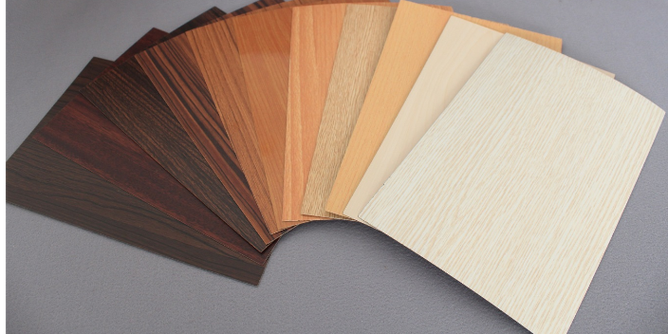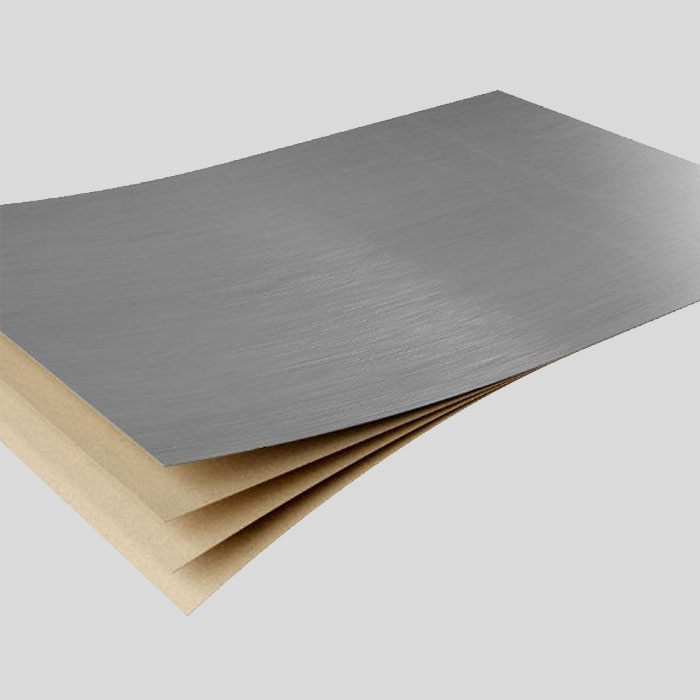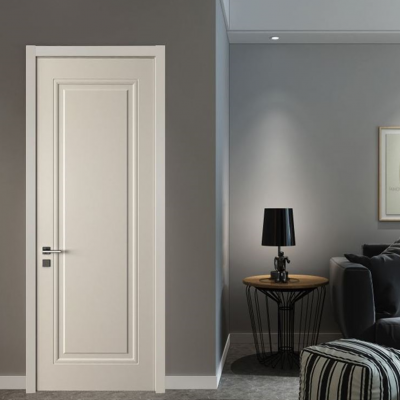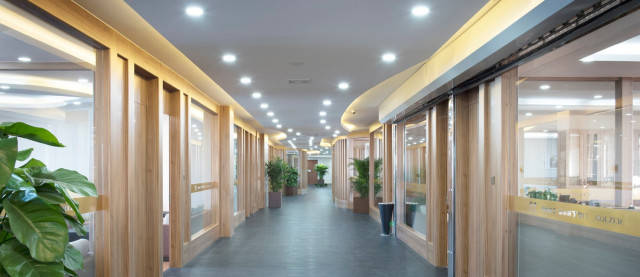When selecting a surfacing material for furniture, interiors, or construction, High-Pressure Laminate (HPL) and Continuous Pressure Laminate (CPL) are popular choices due to their versatility and aesthetic appeal. However, their differences in manufacturing, durability, cost, and application make them suited to distinct use cases. This comprehensive comparison dives into their characteristics to guide your decision-making.
What is HPL (High-Pressure Laminate)?
HPL is a robust surfacing material created by stacking layers of kraft paper soaked in phenolic resin, topped with a decorative paper layer coated in melamine resin. These layers are fused under high pressure (1,000–1,400 psi) and heat (around 140–180°C), forming a dense, rigid sheet. Known for its durability, HPL is a go-to for high-traffic environments like kitchens, offices, and public spaces.

What is CPL (Continuous Pressure Laminate)?
CPL, also called low-pressure laminate in some contexts, is produced using a continuous belt press system with rollers applying moderate pressure (300–600 psi) and lower temperatures than HPL. This results in a thinner, more flexible laminate, ideal for wrapping curved surfaces or covering large panels economically. While less durable than HPL, CPL is widely used in budget-conscious furniture and interior applications.

Manufacturing Process: HPL vs CPL
HPL Manufacturing:
Process: Multiple layers of resin-impregnated kraft paper and a decorative top sheet are pressed in a batch process using heavy hydraulic presses.
Conditions: High pressure (1,000–1,400 psi) and heat create a compact, non-porous structure.
Outcome: A rigid, thick laminate with exceptional strength and resistance to wear.
CPL Manufacturing:
Process: Continuous pressing via rollers applies uniform pressure to resin-soaked paper layers in a streamlined, automated system.
Conditions: Lower pressure (300–600 psi) and milder heat produce a flexible, lightweight sheet.
Outcome: A thinner laminate that’s easier to handle and apply, especially on curved or irregular surfaces.
Verdict: HPL’s high-pressure batch process yields superior durability, while CPL’s continuous method prioritizes efficiency and flexibility, reducing production costs.
Thickness Comparison: Robustness vs Flexibility
HPL Thickness:
Range: 0.6mm to 1.5mm (or thicker for specialty applications).
Characteristics: Feels solid and substantial, contributing to its premium aesthetic and structural integrity.
Use Case: Ideal for standalone panels or surfaces requiring minimal substrate support.
CPL Thickness:
Range: 0.2mm to 0.6mm.
Characteristics: Lightweight and pliable, allowing it to conform to edges and curves without cracking.
Use Case: Perfect for edgebanding, laminating thin panels, or wrapping complex shapes.
Verdict: HPL offers robustness for heavy-duty surfaces, while CPL’s thinness enables versatility in applications requiring flexibility.
Durability and Resistance: Performance Under Pressure
HPL Durability:
Scratch Resistance: Resists abrasions from daily use, ideal for countertops and desks.
Moisture Resistance: Non-porous surface prevents water damage, suitable for kitchens and bathrooms.
Impact Resistance: Withstands heavy knocks and drops, common in commercial settings.
Heat Resistance: Tolerates hot pans or equipment (up to ~180°C) without warping.
Strengths:
Lifespan: Often lasts 10–20 years in high-traffic areas with proper care.
CPL Durability:
Moderate resistance to scratches and light impacts, sufficient for residential furniture.
Limited moisture resistance, requiring sealed edges to prevent swelling.
Lower heat tolerance, prone to damage from prolonged exposure to high temperatures.
Strengths:
Lifespan: Typically 5–10 years in low-to-moderate use environments.
Verdict: HPL is the clear winner for durability, excelling in demanding settings. CPL suits lighter applications where wear is minimal.
Application Suitability: Where Each Laminate Excels
HPL Applications:
Residential: Kitchen countertops, bathroom vanities, dining tables.
Commercial: Office workstations, hospital furniture, retail displays, gym lockers.
Specialty: Wall cladding, elevator interiors, public restroom partitions.
Why It Works: Its thickness and resilience handle heavy use and frequent cleaning.
CPL Applications:
Residential: Wardrobe doors, bookshelves, drawer fronts, TV units.
Commercial: Office cabinetry, low-traffic wall panels, store shelving.
Specialty: Edgebanding for furniture, lightweight interior linings.
Why It Works: Its flexibility and affordability make it ideal for large-scale or curved surfaces.
Verdict: HPL is best for high-impact, long-lasting surfaces; CPL shines in cost-sensitive, aesthetic-driven projects.

Cost Efficiency: Budgeting Your Project
HPL Cost:
Factors: Higher material usage (more kraft paper), energy-intensive production, and premium durability drive costs.
Price Range: Varies widely by brand and finish, but generally $5–$15 per square foot (material only).
Value: Justifies expense with longevity and low maintenance in high-use areas.
CPL Cost:
Factors: Streamlined production and thinner construction reduce material and energy costs.
Price Range: Typically $2–$8 per square foot, depending on quality and design.
Value: Offers affordability for projects prioritizing aesthetics over heavy-duty performance.
Verdict: CPL is the budget-friendly choice, while HPL’s higher cost reflects its superior lifespan and strength.
Aesthetics and Finishing Options
Shared Features:
Both available in diverse patterns: woodgrains, solid colors, metallic effects, and abstract designs.
Finishes include matte, gloss, textured, or embossed surfaces to mimic natural materials.
Custom printing allows for branded or unique designs.
HPL Aesthetics:
Thicker construction supports deeper embossing, enhancing tactile realism (e.g., woodgrain feels lifelike).
Clean, polished edges reduce visible seams, ideal for exposed surfaces.
Perceived as more luxurious due to its weight and finish quality.
CPL Aesthetics:
Comparable visuals from a distance, but thinner sheets limit texture depth.
Slightly less refined edges may require careful installation to avoid visible lines.
Lightweight nature suits seamless applications like edgebanding.
Verdict: HPL delivers a premium look and feel, while CPL provides cost-effective aesthetics for less critical applications.

Installation and Handling: Ease vs Strength
HPL Handling:
Challenges: Requires precision cutting (carbide-tipped tools) to avoid chipping.
Installation: Bonded to substrates like MDF or plywood using adhesives; heavier sheets need secure mounting.
Time: Slower to install due to rigidity and thickness, especially for complex shapes.
Skill Level: Best handled by professionals for flawless results.
CPL Handling:
Advantages: Cuts easily with standard woodworking tools; flexible enough for curves.
Installation: Applies quickly to large surfaces or edges via roll lamination or adhesive bonding.
Time: Faster to install, reducing labor costs.
Skill Level: More forgiving for DIY or semi-skilled labor.
Verdict: CPL is easier and faster to install, especially for curved or large-scale projects. HPL demands expertise but ensures a sturdier finish.
Sustainability and Environmental Impact
HPL Sustainability:
Energy-intensive production (high heat and pressure).
Thicker sheets consume more raw materials.
Long lifespan reduces replacement frequency, minimizing waste.
Many manufacturers use FSC-certified paper and low-VOC resins.
Recyclable in some facilities, though not universally.
CPL Sustainability:
Shorter lifespan may lead to more frequent replacements.
Recycling options vary by region and manufacturer.
Lower energy use in continuous production.
Thinner sheets require less paper and resin.
Lightweight design reduces transportation emissions.
Verdict: CPL has a slight edge in production efficiency, but HPL’s durability makes it more sustainable long-term. Always check for eco-certifications (e.g., FSC, GREENGUARD) when prioritizing green materials.

Conclusion: Which One Should You Choose?
The choice between HPL and CPL hinges on your project’s priorities:
Choose HPL if:
You need a surface for high-traffic or heavy-use areas (e.g., kitchen counters, office desks).
Durability, impact resistance, and longevity are critical.
A premium aesthetic with deep textures and polished edges matters.
Budget allows for higher upfront costs to save on maintenance and replacements.
Choose CPL if:
You’re working with a tight budget or large-scale project (e.g., furniture production).
The application involves light use, like wardrobe panels or decorative linings.
Flexibility is needed for curved surfaces or edgebanding.
Speed of installation and ease of handling are priorities.
Final Tip: For mixed-use projects, consider combining both—HPL for high-wear surfaces (e.g., tabletops) and CPL for secondary elements (e.g., cabinet sides)—to balance cost and performance. Always consult with suppliers for samples to compare finishes and confirm compatibility with your design goals.
This comparison leverages your detailed input while refining it with precise data (e.g., pressure ranges, cost estimates) and practical advice. If you’d like further details—say, specific brand recommendations, maintenance tips, or a visual chart comparing HPL and CPL—let me know!
English
Русский
العربية
Français
Español
Português
Deutsch
italiano
日本語
한국어
Nederlands
Tiếng Việt
ไทย
Polski
Türkçe
አማርኛ
Bahasa Melayu
தமிழ்
Filipino
Bahasa Indonesia
magyar
Română
Монгол
қазақ
Српски
हिन्दी
فارسی
Kiswahili
Slovenčina
Slovenščina
Svenska
українська
Ελληνικά
Suomi
Հայերեն
עברית
اردو
Shqip
বাংলা
Hrvatski
Afrikaans
Māori
සිංහල
Oʻzbekcha
latviešu
Беларуская мова
Bosanski
Български
ქართული
Lietuvių
Malti
Runasimi







